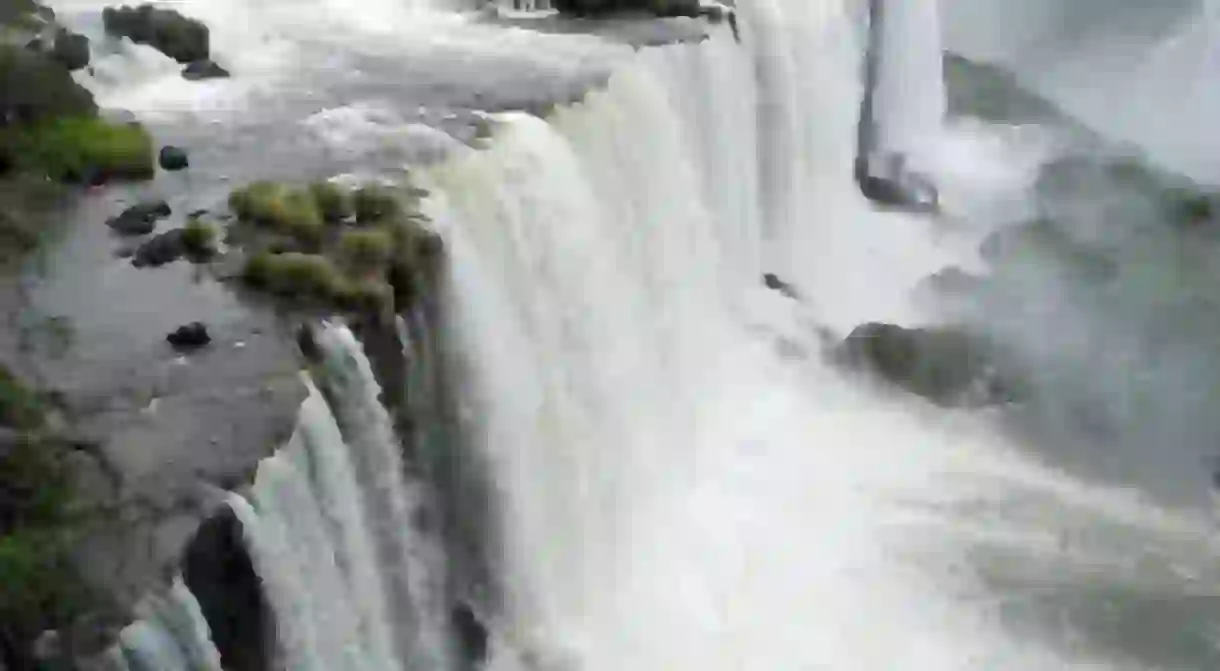10 Things to Know Before You Visit Iguazu Falls, Brazil

In the case of the absolutely breathtaking Iguazu Falls, which is shared between Brazil and Argentina, it doesn’t matter how many photos, or how much video you see of it, it always lives up to the hype. Here are some helpful facts and info to know before your legendary day at the Iguazu waterfalls.

Open earth
One of the most unique waterfalls on the planet, and now one of the most famous, was created when an enormous volcanic eruption created a huge crack in the earth, which creates the incredible spectacle as the Paraná River runs off it.
Sheer enormity
To put in perspective the enormity of this volcanic crack, Iguazu Falls is not only 31 meters (102 feet) taller at the highest points, than the more famous Niagara Falls, but it is also twice as wide!

Who left the tap on?
Those figures do not make Iguazu the biggest waterfall in the world, however, it certainly is one of the wettest, something you appreciate when you visit, as the sound of the water is deafening. A staggering flow rate average of 62,000 cubic feet of water flow over the edge, every single second.
Dry run
Due to the size, surface area and incredible number of actual cliffs, edges and falls located within the crevasse of Iguazu, there is still a stretch of almost 3,000 feet of the 1.7 mile long falls that doesn’t have any water running over it.

Triple frontier
Rivers are often used as dividing lines and borders between territories and nations and the natural curve of the Parana River weaves and bends its way alongside Paraguay, Argentina and Brazil, at a point where you can view all three “frontiers.” The waterfall itself is shared between the nations of Brazil, and Argentina.
Remote location
Good things come to those who wait, and great things come to those willing who go long distances. That is certainly the case when visiting the falls as they’re located on the southwest corner of Brazil, 8 to 10 hours from the closest big city of Curitiba. From the Argentinian perspective, the closest notable city is the capital, Buenos Aires, which is between 15 and 18 hours drive away.

Brazilian side
From the green and gold side of the falls, you will pay just under 64 Brazilian Reals (2018) which correlates to roughly $18.50 USD. This includes your entrance to the park, from open to close, transportation to the beginning of the trail along the river’s edge, and transportation back to the main gate of the park. Average duration of time to walk the 1.5 km trail, and river walk over the waters edge is usually 1.5 – 3 hours.
Argentinian side
From the blue and white side of the falls, where you will of course have to factor in the process of crossing an international border, the entrance cost to the park will set you back 500 Argentinian Pesos, roughly $25 USD (2018) but the cost is justified as the average time spent on the Argentinian side to see everything is between 3 and 6 hours.

When to go
As mentioned before, the river is always gushing so there is no fear of witnessing a dry falls, however there is a good and bad time to visit the falls. The winters in this area of Brazil are never cold, but the water level can be considerably lower than other seasons, and summer can be unbearably humid, so it is recommended to visit in the tranquil seasons of fall, or spring.
Hollywood
Iguazu Falls, which in Guarani and Tupi translate to ‘big water’ has been globally featured as the impressive backdrop in a number of big Hollywood productions including the movie, Indiana Jones and the Kingdom of the Crystal Skull.













